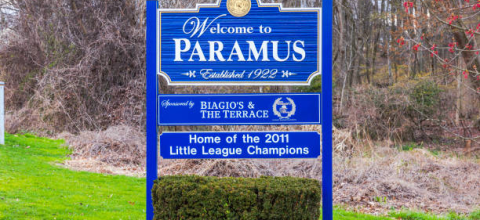Pet Friendly Indoor Plants that Purify the Air
One of the coolest parts about owning indoor plants is that, if you buy the right ones, they can actually detoxify the air in your living space. There are a plethora of plants out there that can purify your home from everything from formaldehyde to benzene and xylene. Unfortunately, some of these plants are harmful to pets, so if you’re considering adding some to your living space and you need to make sure they are pet-friendly indoor plants.
EXACTLY HOW DO PET-FRIENDLY INDOOR PLANTS PURIFY THE AIR?
Our current knowledge of pet-friendly plants that detoxify the air actually started in the 1960s when B.C. Wolverton, an environmental scientist working with the U.S. military was tasked with cleaning up environmental messes left by biological warfare centers. At that time they discovered that swamp plants were removing Agent Orange from the environment near Eglin Air Force Base. Spurred on by this discovery, the National Aeronautics and Space Administration (NASA) hired him to further the available knowledge on the purifying properties of plants. They had him work on using plants to clean waste water, which was successful. Wolverton then moved his research to focus on air purification.
NASA’s website, Spinoff, writes:
“In 1973, NASA scientists identified 107 volatile organic compounds (VOCs) in the air inside the Skylab space station. Synthetic materials, like those used to construct Skylab, give off low levels of chemicals. This effect, known as off-gassing, spreads the VOCs, such as formaldehyde, benzene, and trichloroethylene, all known irritants and potential carcinogens. When these chemicals are trapped without circulation, as was the case with the Skylab, the inhabitants may become ill, as the air they breathe is not given the natural scrubbing by Earth’s complex ecosystem.”
Wolverton wished to focus not on moving away from synthetic materials but to find a solution for restoring personal environments. Wolverton concluded in 1989 that “If man is to move into closed environments, on Earth or in space, he must take along nature’s life support system.” The simple answer: plants.
In Wolverton’s publication “How to Grow Fresh Air: 50 Houseplants That Purify Your Home or Office” he explains the purification process, saying that “plants emit water vapor that creates a pumping action to pull contaminated air down around a plant’s roots, where it is then converted into food for the plant.”
Interestingly, there has also been research that suggests the presence of plants has healing powers and plays a psychological role in welfare. It is possible to recover from illness faster if you are surrounded by plants.
WHY IS IT IMPORTANT TO ENSURE THEY ARE PET-FRIENDLY INDOOR PLANTS?
Some plants are toxic to pets and if you place one in your home unaware, you risk poisoning your best friend. It’s important always to check the type of plant you buy against the American Society for the Prevention of Cruelty to Animal’s (ASPCA) list of toxic and non-toxic plants before placing it in your home. They also have a 24-hour emergency poison hotline at 1-888-426-4435.
The symptoms of poisoning vary based off what your pet ingested, but the generalized symptoms include:
- Vomiting
- Diarrhea
- Seizures
- Blood in the stool
- Lethargy
- Loss of appetite
- Bruising
- Nosebleeds
- Irregular heartbeat
- Inability to urinate
Additionally, the ASPCA points out that any type of plant ingestion, even if it’s non-toxic, can lead to vomiting and gastrointestinal distress. Wanting to decorate your space and purify the air at the same time is great, but if you have pets, it’s vital you make sure they are pet-friendly indoor plants.
WHAT ARE SOME COMMON PET-FRIENDLY INDOOR PLANTS?
Money Tree Plant. The money tree is of the bonsai family and is rumored to bring its owners good luck and good fortune. The money tree specifically reduces benzene, xylene, toluene and formaldehyde in the air.
Spider Plant. The spider plant is more attractive the larger it grows. Each limb sprouts babies that you can cut off and plant in a new pot to grow your pet-friendly indoor plant garden. Spider plants purify formaldehyde, toluene, and xylene from the air.
Boston Fern. The first Boston Fern was introduced in 1894 as a hardier variety fern that was more adaptable to warmer homes. Boston Ferns purify formaldehyde, xylene, and toluene from the air.
Moth Orchids. Moth orchids do best planted in bark or moss, and are temperamental about their water intake. But if you can bring one to bloom, moth orchids are lovely to look at and come in a variety of color combinations. Moth Orchids purify xylene, toluene and paint fumes.
Bamboo Palm. Bamboo palms are hardy and will grow in low light conditions, making them ideal for office spaces. Bamboo palms reduce xylene and toluene in the air.
HOW ELSE CAN YOU PURIFY THE AIR?
There are many other great ways to purify the air in your home, outside of pet-friendly indoor plants. One great option is investing in an air purifier. Air purifiers work by filtering particles from the air by pushing it through filters. The finer the filter, the smaller the particles that are trapped. High-Efficiency Particulate Air (HEPA) filters trap 99.97% of airborne particles larger than 0.3 microns. The more air exchanges the purifier goes through, the cleaner the air in the room.
Another widespread practice is to have your air ducts cleaned. The harmful pollutants in your home’s air are taken and recirculated by your HVAC system an average of 5 to 7 times a day. If you schedule a regular air duct cleaning, you can significantly reduce the level of these pollutants in the air.
Call 800-482-8224 to schedule an appointment with an Amazon Air Duct Cleaning Professional today!










